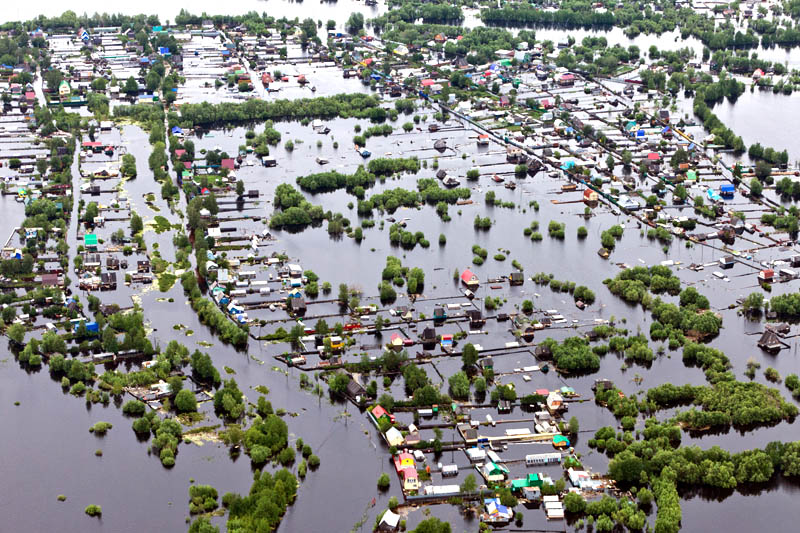Many people in areas deluged by rains and flooding tides fed by Hurricane Joaquin are likely to be surprised to find that standard homeowners’ insurance policies do not cover damage from floodwater.
 Property owners seeking that kind of protection need to buy a separate flood policy, usually through the National Flood Insurance Program, administered by the Federal Emergency Management Agency, or through a few independent sellers. The federal policies pay up to $250,000 for a structure and up to $100,000 for personal possessions.
Property owners seeking that kind of protection need to buy a separate flood policy, usually through the National Flood Insurance Program, administered by the Federal Emergency Management Agency, or through a few independent sellers. The federal policies pay up to $250,000 for a structure and up to $100,000 for personal possessions.Relatively few homeowners have flood coverage. According to estimates, just 10 percent of homeowners in South Carolina, which has suffered a historic deluge, carry flood insurance, said Russ Dubisky, executive director of the industry-funded South Carolina Insurance News Service. The national average is 14 percent, based on 2014 data from the Insurance Information Institute, a trade group.
The average flood insurance premium is about $700 a year, although rates for properties in flood-prone areas can be much higher. Rates are rising because of heavy losses from major storms like Hurricane Katrina and Hurricane Sandy. While flood insurance isn’t mandatory, lenders typically require homeowners in high-risk areas to buy it to qualify for a mortgage.
In an attempt to get the federal flood program out of the red, Congress passed the Biggert-Waters Flood Insurance Reform Act of 2012 to eliminate big discounts for policies in high-risk areas. But last year, Congress passed another law that slowed the impact of the premium increases for many policies.
New rates that took effect April 1, however, still increased policy premiums for homeowners in flood-prone areas as much as 25 percent. And surcharges were added for all policies: $25 for owner-occupied primary homes and $250 for second homes.
Homeowners who go without coverage have little recourse in the event of a flood. Some federal disaster aid may help with grants for temporary housing and repairs for lower-income households, but assistance for most homeowners takes the form of low-interest loans that must be repaid, said Amy Bach, executive director of United Policyholders, a nonprofit group that advises consumers on insurance issues.
Although experiencing a flood is overwhelming, Ms. Bach advises those who have flood insurance to move as quickly to document the damage to their homes so they can file a claim promptly; flood claims generally must be filed within 60 days. Extensions are sometimes granted, she said, but it is unwise to count on that. “Get the wheels in motion,” she said. “Take lots and lots of pictures, and lots and lots of notes.”
Experience with other storms suggests that homeowners should not rely solely on their insurer’s assessment of damage when making a claim, she said. She strongly urges homeowners to take the time to get a second opinion by hiring their own contractor to inspect the property, particularly the foundation. If the floodwater caused structural damage, that is significantly more costly to fix than soggy drywall and carpet. “Understand what the flood did to the house,” she said. “You can’t get to an accurate number until you know that.”
Here are some questions to consider about flood insurance:
Q. What if my car is damaged by floodwater?
Generally, the “comprehensive” portion of your auto insurance policy covers flood damage. Such coverage is often optional, but many lenders require it if you borrowed money to finance the purchase of your car. Car claims are likely to be significant in South Carolina, Mr. Dubisky said. “We have seen a lot of flooded vehicles.”
Q. If flooding causes a tree to fall on my home, is that damage covered by my homeowner policy?
Generally, yes, said Mr. Dubisky.
Q. Does my federal flood policy cover temporary living expenses?
No, according to the federal flood program’s website. The policies also exclude coverage for damage to exterior property, like decks and patios.
Q. If I buy flood insurance, how soon can I file a claim?
Federal flood policies require a 30-day waiting period before they become effective. Independent policies may offer shorter waiting periods, but coverage and pricing may vary from federal policies. Ms. Bach said it might be worth getting an independent quote to compare with federal coverage, but try to find a knowledgeable agent who could explain the difference.
The news reports from South Carolina over the last few days have brought back memories for so many who lived through our flood in May of 2010. Little has changed as far as what is and is not covered as a result of flooding except flood insurance premiums have increased. I still think that any home/property owner has to consider flood insurance when they buy any insurance on their property. Comprehensive coverage on auto insurance aids in repair of flood damaged vehicles and most all of our insureds carry comprehensive coverage unless the car is of little value to them and they choose to cover the vehicle for liability only.
We offer flood insurance and even though the quoted section above regarding flood insurance premium indicated premiums are $700 average, we see most of our flood insurance premiums in the $350 to $500 range per year. This premium amount affords good coverage for the flood prone sections of our insureds property.
Let us help you with flood or any other type of insurance. You can contact our staff at 615.377.1212 or EMAIL us at info@BentonWhite.com. We’re always ready to EARN your business!
(Portions of this post is taken from an article written by Ann Carrns – New York Times – “With Flood Insurance Rare, Homeowners Have Little Recourse” – released online October 7, 2015.)





